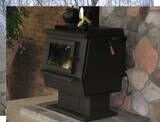C
charly
Guest
I'll have to look at the stove inside, once I stop buring. Outside looks fine under the heat shields. I can say I really don't hammer my stove. Usually run a 600- 700 top temp. Thanks I'll check the picture out.ohlongarm said:Check out the thread Nov 17,2010 it will show you exactly what mine had ,as well as the crack on the stoves interior.xclimber said:Where abouts were your cracks under the heat shields?ohlongarm said:Not wanting to belittle your stove ,but just stating my experiences with two 5700's,the one I bought in 2004 was a great stove and temperatures of 800 were not uncommon,however about four months ago while reading an article here about cracks in the main body under the heat shields,I checked my stove and low and behold cracks on both sides. Quadrafire did replace the stove in its entirety including removal and installation of the old and the NEW 5700. I absolutely hated the new 5700 smaller firebox,and automatic damper that I thought was useless.I got rid of it and now have a new King Ultra.I wish the best of luck to you with your Quad and merely stated my experince with my two.oldspark said:So does any one know if 800 is too hot for the quad 5700, I do not.


